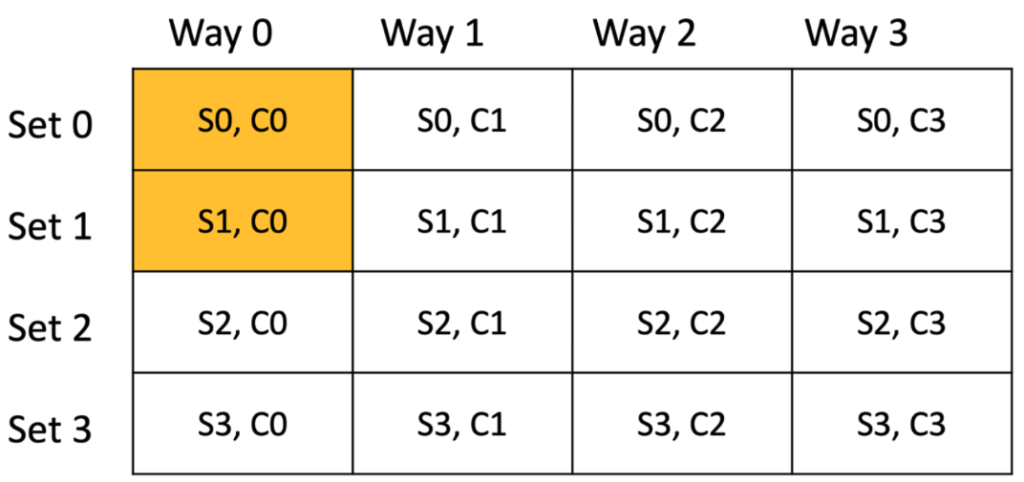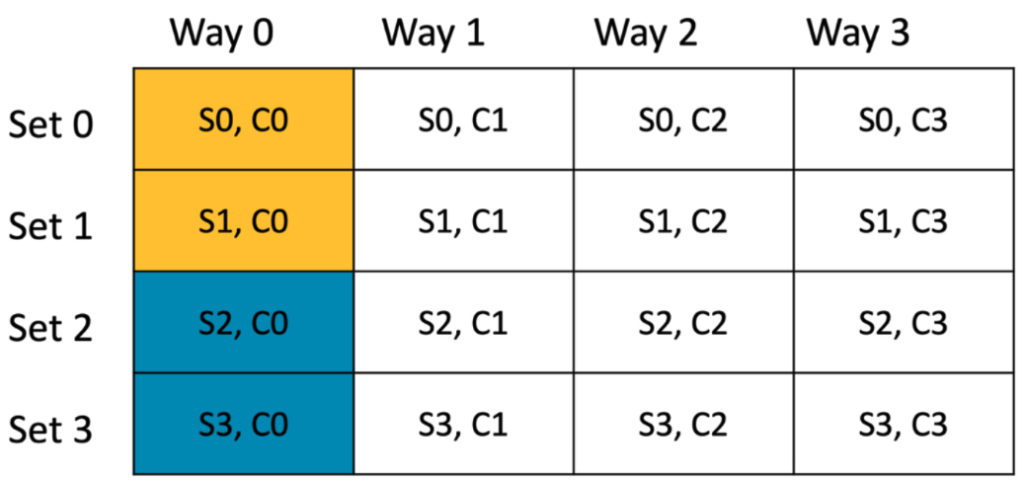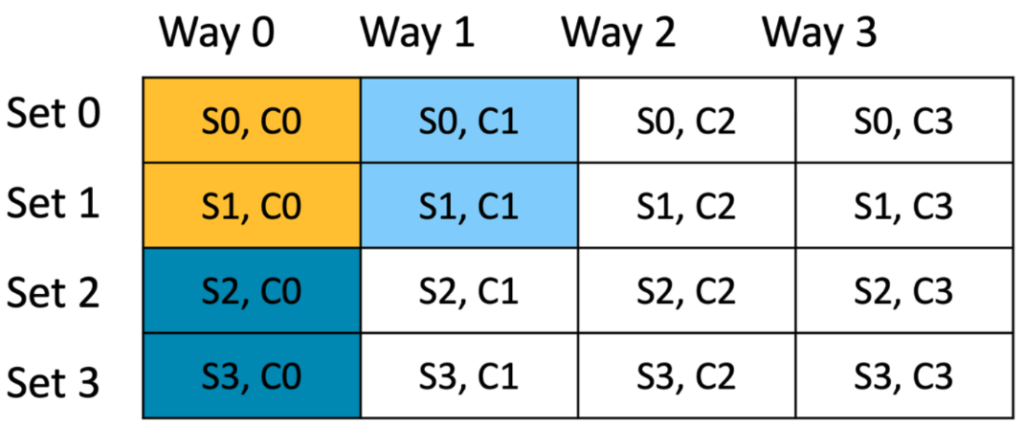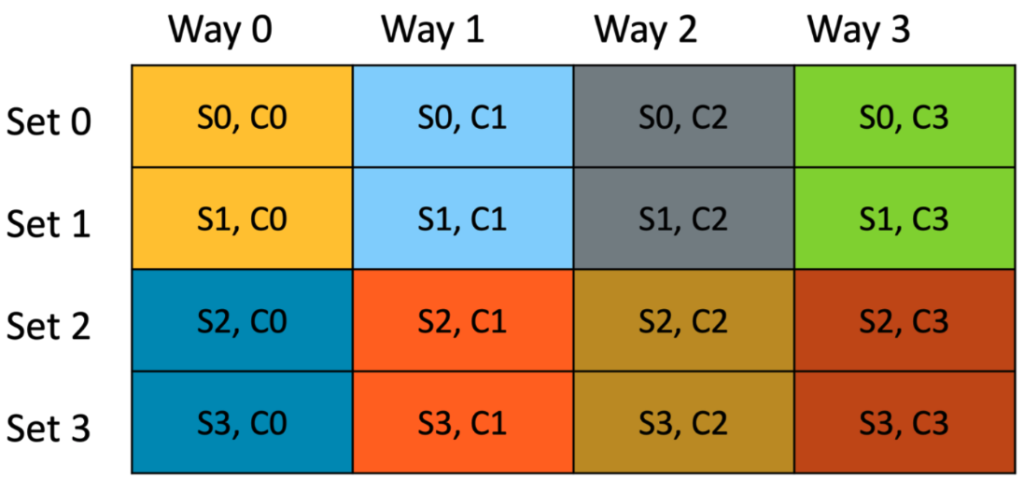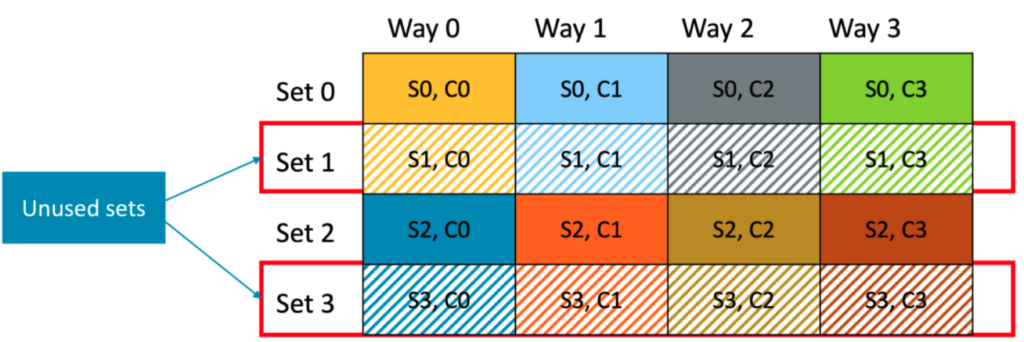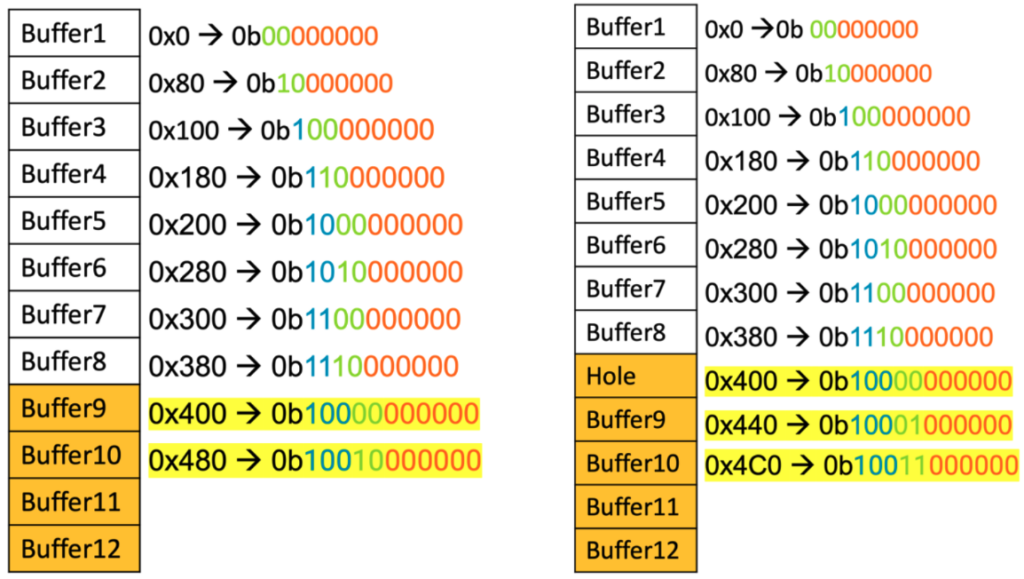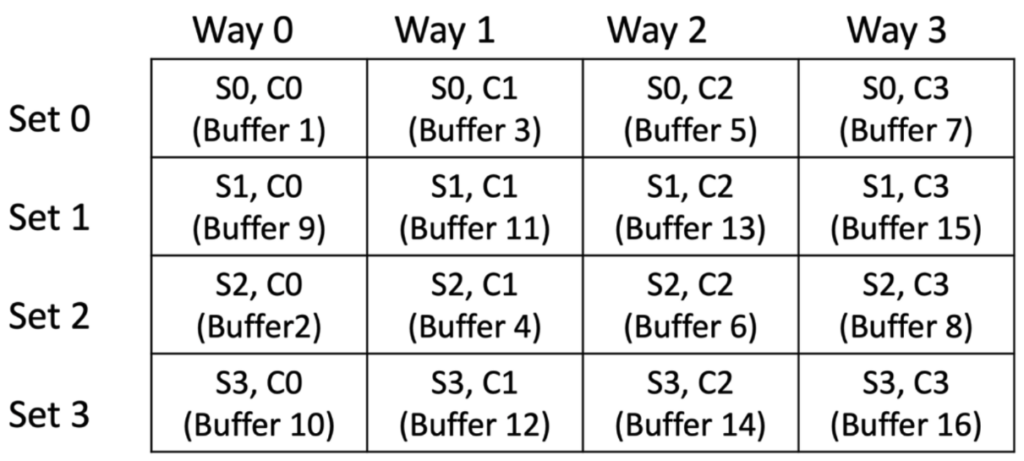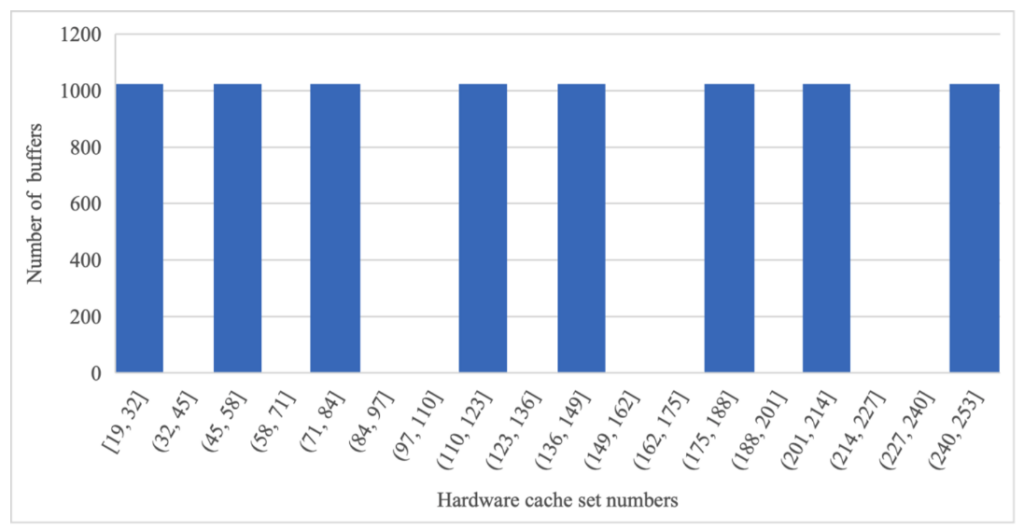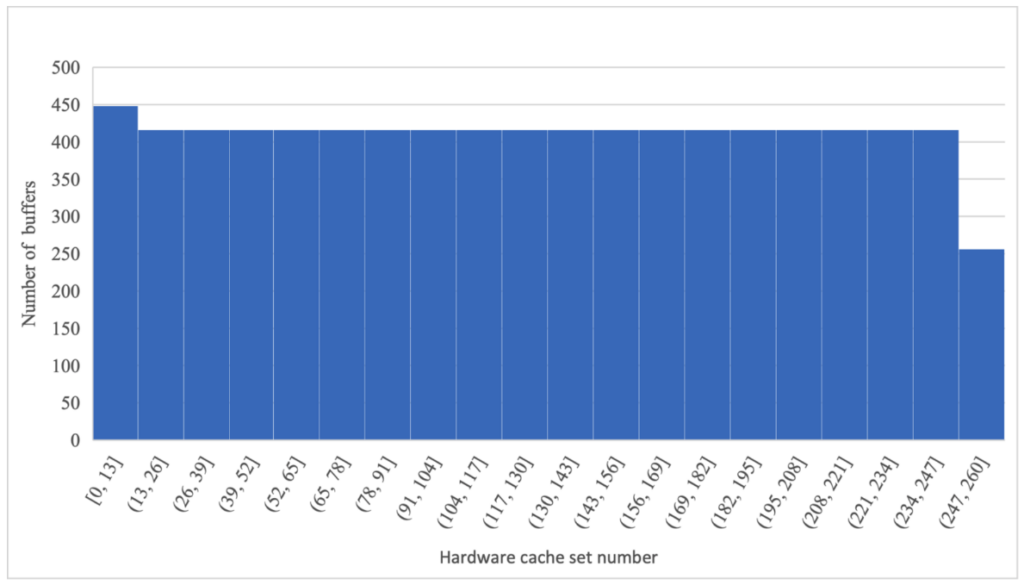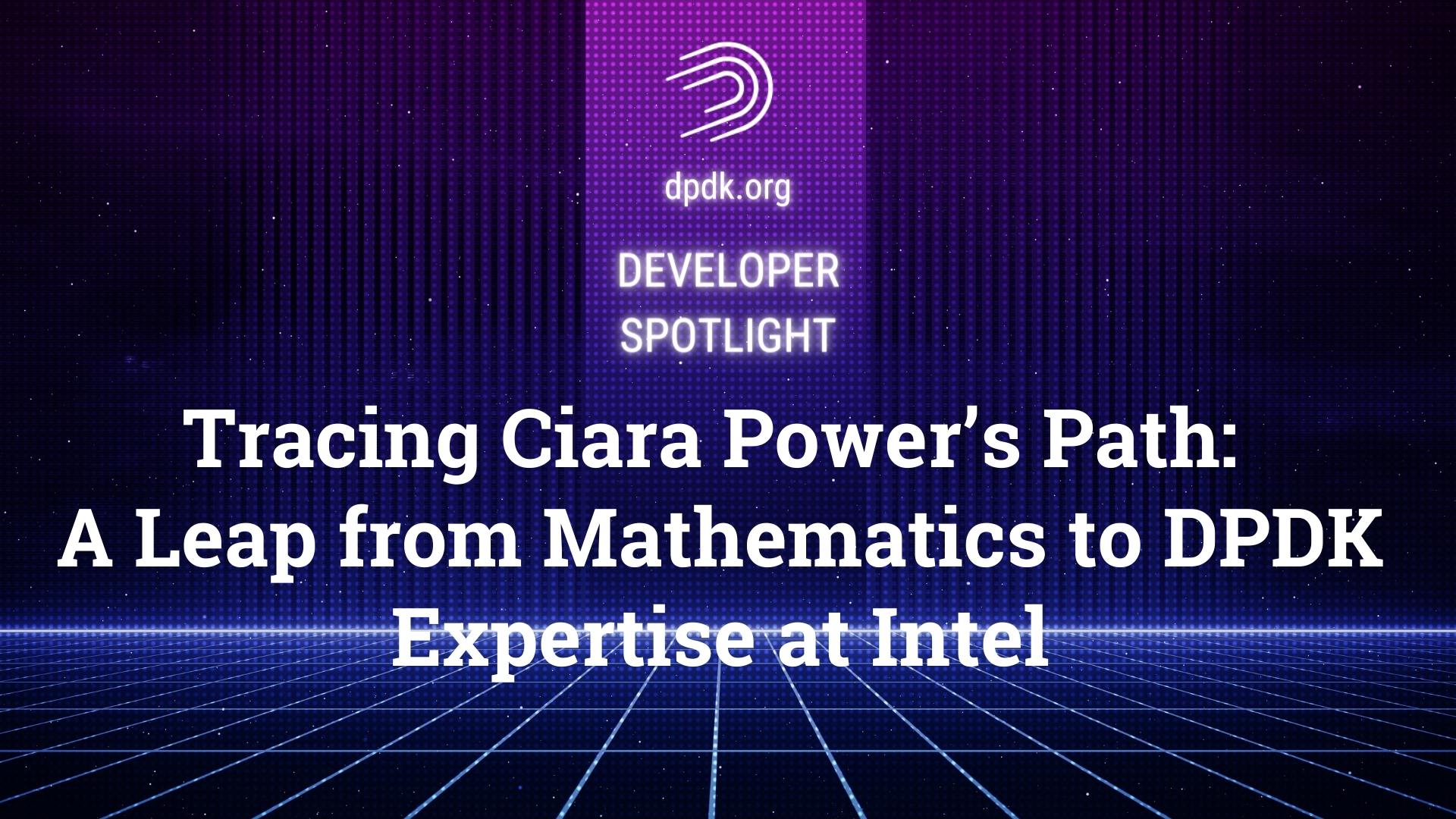Welcome to the latest installment of our DPDK Developer Spotlight series, where we share the unique journeys and insights of those who contribute to the DPDK community. This edition highlights Ciara Power, a former Technical Lead and Network Software Engineer at Intel. We explore her path into open source development from a math enthusiast at school to a software developer shaping the future of DPDK.
Early Life and Education
A Mathematical Foundation
Ciara’s pathway into the world of computer science and programming was not straightforward. Initially grounded in mathematics, her educational journey began in an environment where technical subjects were rarely emphasized, particularly at an all-girls school in Ireland, that did not prioritize technological advancements. Despite this, Ciara’s inherent love for math led her to pursue it at the university level.
Discovering Programming
While pursuing her studies at the University of Limerick, Ciara encountered a pivotal moment—a chance to explore programming through an introductory taster course subject. This opportunity resonated with a piece of advice she had received from her mother since childhood: she was destined to be a programmer.
Transitioning to Computer Science
A Turning Point
This insight from her mother proved to be more than mere encouragement; it was a recognition of Ciara’s innate abilities and potential for finding joy and fulfillment in a realm she had yet to explore. Indeed, this was a powerful testament to the foresight and intuition that mothers often have about their children’s hidden talents like they say, ‘Mother knows best’’.
After finishing the programming subject course, Ciara reached a turning point. The practical aspects of problem solving appealed to her more than theoretical mathematics. Driven by this preference, and after several challenging weeks, she decided to exit the mathematics course. That September, she took a notable step by starting a computer science course at the Waterford Institute of Technology.
The first year of her computer science studies confirmed her decision; she thrived in this environment, where she could apply logical thinking to tangible problems. The satisfaction of crafting solutions and the joy of creative exploration grounded her.
Balancing Hobbies and Career
A Blend of Technical and Artistic Talents
Ciara’s enthusiasm for her studies crossed over into other areas of her life, enriching her creative pursuits. From painting and drawing to woodworking and knitting, she embraced a wide array of hobbies, each providing a different outlet for her creative expression. This blend of technical skill and artistic talent became a defining feature of her approach to both work and leisure.
Ciara’s engagement with her various hobbies provides a crucial balance and unique perspective that enhances her programming work: the ability to visualize the broader picture before delving into details. Just as a painter steps back to view the whole canvas, Ciara applies a similar approach in her coding practices. This allows her to assess a project from various angles.
Her method of drawing diagrams on a whiteboard is emblematic of her systematic approach to problem-solving, juxtaposed with her ability to incubate ideas and contemplate them from different perspectives.
This blend of logic and creativity marks her programming style, making her adept at tackling complex problems with innovative solutions. Her ability to think outside the box and not get overly absorbed in minutiae gives her an edge, making her work both methodical and inspired.
Moreover, these pursuits offer Ciara a form of catharsis, a way to decompress and process information subconsciously, which in turn feeds into her professional work.
Her dual approach—systematic yet open to creative leaps—illustrates how her hobbies not only complement but actively enhance her capabilities as a programmer. This synergy between her personal interests and professional skills exemplifies how diverse experiences can contribute to professional excellence in technology and programming.
Professional Development at Intel
Internship and Real-World Experience
Ciara’s transition from academia to the practical, fast-paced world of software development provided her with an invaluable perspective that she would carry throughout her career. Her internship with the DPDK team at Intel in Shannon, Ireland, was not just about gaining professional experience; it was a deep dive into the collaborative and iterative processes of real-world technology development.
Challenges and Adaption
During her eight-month placement, Ciara engaged directly with complex projects that were far more advanced than her college assignments. This experience was crucial for her; it wasn’t just about coding but also about understanding how large-scale software development projects function, how teams interact, and how products evolve from a concept to a market-ready entity.
One significant challenge was her initial foray into the open source community through DPDK. Coming from an academic background where open source wasn’t a focus, the learning curve was steep.
She had to quickly adapt to the open source ethos of sharing, collaborative open development, and the transparent critique of code. Learning to navigate and contribute to discussions on mailing lists, where she interacted with developers of varying seniority from around the world, was initially daunting.
As a newcomer, she was initially anxious about how she might be received, given the prevalent challenges women often face in tech environments. However, her experience was overwhelmingly positive. From the onset, she was treated with the same respect and consideration as any seasoned developer. This egalitarian approach was not only affirming but also empowering.
To ingratiate herself within the DPDK community, Ciara adopted a humble approach to learning and contributing. She began by actively listening and understanding the community dynamics before making her contributions.
Reviewing others’ code and providing constructive feedback became a routine that not only helped her understand the nuances of professional coding but also built her reputation as a thoughtful and capable developer. This proactive engagement helped her transition from an intern at Intel to a respected member of the community.
Projects and Technical Accomplishments
Ciara’s technical journey with DPDK deepened significantly, largely due to the interactions and guidance from OG maintainers Bruce Richardson (Network Software Engineer at Intel Corporation) and Akhil Goyal (Principal Engineer at Marvell Semiconductor).
Her first major project was contributing to the development of the Telemetry Library V1 a library for retrieving information and statistics about various other DPDK libraries through socket client connections. This not only honed her technical skills but also gave her a solid understanding of handling community feedback for large patchsets, with plenty of discussion around how to implement the library.
In terms of her main contributions, Ciara refactored the unit test framework, adding support for nested testsuites. This included reworking the cryptodev autotests to make use of nested testsuites and ensure all testcases are counted individually in test summaries. This, in turn, improved the testing experience for the user, making it easier to see which testcases are passing/failing [0].
She was also Involved in various improvements for Intel IPsec-mb SW PMDs, including combining PMDs to use common shared code [1], adding multiprocess support [2], and adding Scatter-Gather List support [3] [3.1].
Ciara also worked on removing Make build system from DPDK. Meson had been introduced a few releases prior, so it was time to completely remove the old build system, with help from many others. A huge task, it touched on nearly every document, library and driver. This involved significant collaboration in the community, with plenty of reviews and testing taking place by other developers and maintainers. [3].
She Added an API and commandline argument to set the max SIMD bitwidth for EAL. Previously, a number of components in DPDK had optional AVX-512 or other vector paths which can be selected at runtime by each component using its own decision mechanism. This work added a single setting to control what code paths are used. This can be used to enable some non-default code paths e.g. ones using AVX-512, but also to limit the code paths to certain vector widths, or
to scalar code only, which is useful for testing. [4]
Additionally Ciara Improved the cryptodev library Asymmetric session usage, by hiding the structure in an internal header, and using a single mempool rather than using pointers to private data elsewhere [4]. She also Enabled numerous QAT devices and algorithms, including most recently, new GEN3 and GEN5 devices [5].
Bug Fixing
Ciara’s proactive engagement led her to work on fixing various bugs. By utilizing bug detection tools like Address Sanitiser and Coverity, she debugged and resolved a wide range of bugs. This process was not just about resolving immediate issues; it also helped her build a deeper understanding of better programming practices that could be applied in future feature development.
By contributing significant patches and actively participating in community discussions, Ciara received encouragement instead of the skepticism or condescension often found in other communities. This supportive atmosphere helped her quickly find her footing and gain confidence in her abilities. Her contributions were evaluated solely on their merit, reflecting the DPDK community’s commitment to contributor diversity.
Community Engagement and Recognition
Active participation and support
Throughout her journey, the open source community, particularly her interactions on the DPDK forums and mailing lists, played a crucial role. Under the guidance of Bruce Richardson, Pablo de Lara Guarch and Akhil Goyal, Ciara not only contributed significantly but also gained insights that helped shape her technical and strategic acumen.
This exposure allowed her to understand diverse perspectives and collaborative methods essential for open development and open governance across technical communities.
Major Accomplishments
Reflecting on her significant milestones with DPDK, Ciara highlights two major accomplishments. During her internship at Intel, she contributed to the development of the Telemetry Library V1, a library for retrieving information and statistics about various other DPDK libraries through socket client connections.
Upon returning as a graduate, she was entrusted with the complete rewrite of this library, leading to the development of Telemetry V2. This task demonstrated her progression as a developer, showcasing her ability to significantly improve and build upon her earlier work within a relatively short span of time.
Her involvement in developing this library was a significant learning journey, filled with complex challenges and intensive problem-solving that required her to engage deeply with the technology and the DPDK community.
The Telemetry library project stood out not only for its technical demands but also for the collaborative effort it required. Ciara navigated through numerous technical discussions, debates, and feedback loops, integrating community insights to implement and enhance the robustness of the code.
Another notable highlight was her handling of large patch sets. These weren’t monumental in features but were substantial in scope and impact, involving critical enhancements and fixes that improved DPDK’s functionality and reliability.
Valued advice and the Importance of Code Reviews
One of the most impactful pieces of advice Ciara received from the DPDK community centered on the importance of code reviews. Embracing this practice not only honed her technical skills but also cultivated a mindset geared towards continuous improvement and collaboration.
This advice underscored the necessity of meticulously reviewing her own code as well as that of others, which facilitated a deeper understanding of various coding approaches and strategies.
Ciara learned that taking a step back to scrutinize every detail of her work from a broader design perspective was crucial. This approach allowed her to explore alternative solutions and methodologies that might not be immediately apparent.
Engaging in thorough reviews helped her identify potential issues before they escalated, enhancing the overall quality and reliability of her contributions.
Personal Achievement and Awards
Ciara has been recognized multiple times for her contributions at Intel, underscoring her influence and impact within the tech giant. One of her notable accolades includes the Intel Women’s Achievement Award 2021, a testament to her substantial and measurable impact on Intel’s business, profitability, and reputation.
This award is particularly significant as it celebrates individuals who not only excel in their roles but also drive meaningful change across the organization.
In addition to this, Ciara has received multiple Intel Recognition Awards. These commendations highlight her exceptional development work and her proactive approach to risk management, which has helped prevent bottlenecks in community projects.
Her efforts around major patch sets during this period were instrumental in her winning these awards. They were not just routine contributions but were pivotal in enhancing Intel’s technological frameworks.
DPDK Events and the Importance of In-Person Collaboration
Ciara’s experiences at DPDK events provide an illustration of her integration and active participation in the community. After completing her internship at Intel, Ciara attended the DPDK Summit as a participant, not as a speaker.
This event was particularly significant as it occurred shortly after she returned to college in September, marking her first engagement with the community outside of a professional capacity.
During the summit, Ciara experienced the surreal yet affirming moment of connecting faces to the names of those she had interacted only via the mailing list —individuals who had reviewed her work and those whose code she had studied.
The recognition she received from other community members, often unexpectedly knowing who she was, played a crucial role in her sense of belonging and validation within the technical community. This recognition, while surprising to her, underscored the impact of her contributions and her growing reputation within the community.
Life Beyond Work
Balancing life with Nature and Adventure
Ciara’s life outside her technical career is focused on enhancing her well-being and providing a counterbalance to her intensive work in tech.
A dedicated hiker, she has participated in significant events like a charity hike for Cystic Fibrosis Ireland with colleague Pable De Lara Guarch, where a group of hikers scaled Mt. Kilimanjaro, in Tanzania, (5,895 meters) to watch Siobhan Brady set a new world record performing her Celtic harp at the summit!
This particular hike, dubbed the “highest harp concert,” is one of life’s highlights she fondly recalls. You can watch the incredible performance here.
Ciara finds a unique kind of solace close to nature, living just minutes from the coast in the south of Ireland. Her daily walks on the beach, and in the summer, swimming in the ocean are more than just routine; they are a fundamental aspect of her life, crucial for her mental and physical well-being.
These moments by the sea allow her to unwind, reflect, and regain balance, proving essential for maintaining her productivity and creativity in her professional life.
As she prepares to transition from Intel, with plans to move to Sydney, Australia, Ciara looks forward to exploring new professional landscapes and personal adventures. This move not only signifies a change in her career but also underscores her willingness to embrace new experiences and challenges, whether in tech or in her personal pursuits.
The future holds unknowns, but Ciara approaches it with enthusiasm and excitement about the possibilities that lie ahead in both her professional and personal life.
To learn more about the benefits of contributing to DPDK read on here.







